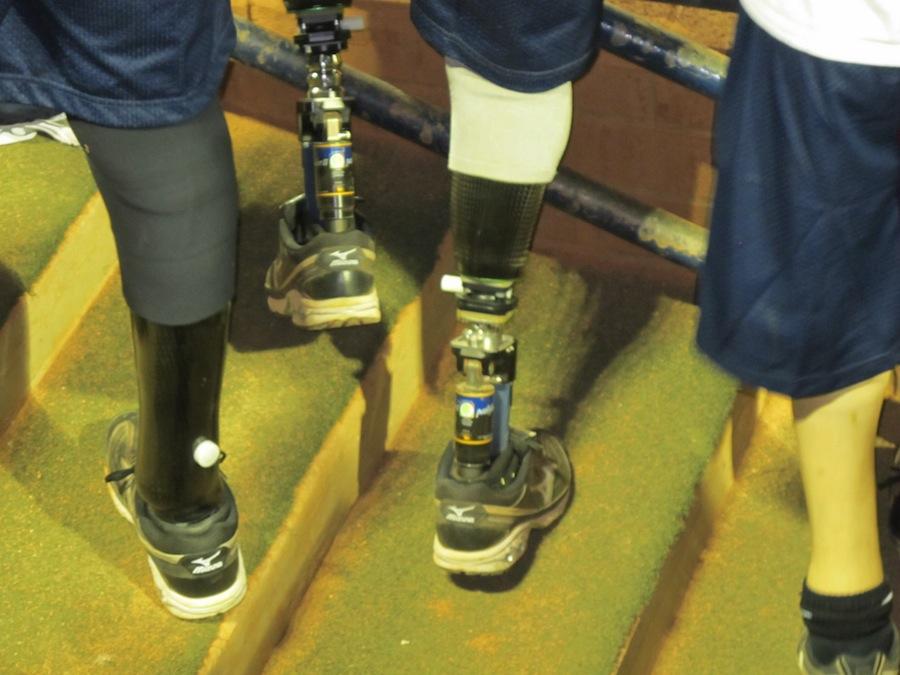Don’t Forget To Change Your Legs!
August 19, 2014
Sometime not too long ago, we, the human race, entered the digital age, and with it came new ideas and an upgrade in our technology.
As our computers grew in their abilities and shrank in size, our cellphones eliminated the need for multiple buttons and even talking, but we stayed the same fleshy, soft, limited beings that all organisms are. But what if we could be better, what if we could expand past our limits? Be smarter, destroy our vulnerabilities, and live forever?
Transhumanism is the belief that we can do just that — improve ourselves beyond our current physical and mental limitations. No longer would our brains be limited in the ability to multitask or have a slow processing speed compared to modern day computers, no longer would we be weaker compared to some of our other earthly companions, and no longer would we feel the strains of depression about a family member’s or friend’s death. Scientists around the world are currently working on a way to make us better.
Hold on now though, let’s get one thing out of the way: human augmentation isn’t just about having a bionic arm or a computer for a brain; it also includes drugs that enhance our physical performance. Anyone ever hear of steroids? Not only that, but our clothing and accessories currently serve as augmentations. Yes, you modified yourself to look better than you thought you did this morning when you put on that Green Lantern t-shirt and pair of blue jeans.
But we’re in the present, so let’s talk about what’s going on now — prosthetics, gene therapy, organ transplants, exoskeletons, and genetic engineering. These, among many others, are all modern day examples of human augmentation. Granted that many of them don’t exactly enhance your abilities (except for Lockheed Martin’s HULC exoskeleton), they are the foundation of future and more advanced augmentations.
Fellow student Michael Burleson had a few thoughts on the subject of transhumanism and human augmentation: “I don’t believe in mechanically enhancing yourself. Sooner or later, it would take the ‘human’ out of ‘transhumanism.’ I don’t want my children growing up in that kind of world. You’d be making robots, not humans. But I don’t mind it if it’s for medical purposes.” Well, Michael, though you make a valid point in the area of human ethics and I am sure that many, myself included, can agree with you to a point, wouldn’t it be cool to think about 100 different things at once, punch through a concrete wall, or run faster than a cheetah?
Sabrina Chen also weighed in. “As regards to human augmentation: I don’t believe this is as slight as warranting an opinion or not. To debate such a practice is analogous to questioning the morals of bioethics and natural selection themselves. Does one simply ‘appreciate’ Darwin? Is an advocate of the scientific end of transhumanism one who goes against unadulterated evolution?”
She continued to reflect, “On the methods of such a practice, I have a curiosity in the exocortex, a system of memory modules and I/O devices to enhance human cognition. I believe, contrary to popular opinion, that this is not equivalent to the formation of artificial intelligence. To me this is a scientific survey of potential. The concept of transhumansim has always appealed to me more than posthumanism due to its slightly more realistic approach. To me it seems to be something tangible, something beyond a simple thought experiment, especially now in an era where such modification could give rise to intellectual manipulation. Downside: I am cautious as to whether humans would be tempted to take advantage of the practice, let alone of each other. The control and manipulation of the mind could be argued as akin to cognitive slavery, which could start a moralistic debate on identity.”
While it might take longer than we expect, soon we may all be able to have better brains and better bodies. But for now we’ll just have to keep working towards an outcome that we’ve only just begun to acknowledge.


